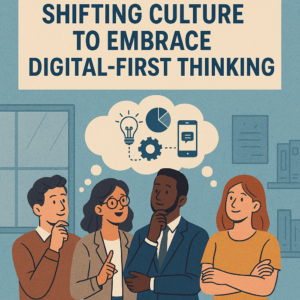In 2025, direct selling companies face a critical challenge—and an even bigger opportunity: unifying their martech ecosystems. For too long, many brands have been bogged down by disconnected systems—separate platforms for CRM, email marketing, SMS, social media, analytics, and field tools. The result? Fragmented customer journeys, wasted resources, and missed opportunities.
Today, the most forward-thinking companies are embracing unified martech ecosystems as a cornerstone of digital transformation. By consolidating platforms and creating a seamless flow of data, brands can unlock personalization at scale, enable smarter field rep tools, and drive better ROI on every digital investment.
What Is a Unified Martech Ecosystem?
A unified martech ecosystem is an integrated suite of marketing technologies that work together in harmony. Instead of relying on multiple siloed tools, brands build or adopt a composable martech stack that connects all critical touchpoints—customer relationship management, email, SMS, social media, campaign automation, analytics, and more—into a centralized hub.
For direct sellers, this also includes integrating tools that support the field: replicated websites, content libraries, lead capture apps, mobile notifications, and real-time reporting. The ecosystem becomes the foundation for a consistent, high-impact brand and customer experience—regardless of who is delivering it.
Why Direct Selling Needs Unified Martech Ecosystems
Direct selling companies operate in a unique model: part brand, part community, part platform. They must serve two masters—field reps and customers—while managing compliance, personalization, and scale. Legacy tech stacks simply can’t keep up.
Here’s why unified martech ecosystems matter more than ever:
1. Eliminate Fragmentation and Data Silos
When CRM, email, and social tools don’t talk to each other, you get broken customer journeys and incomplete data. A unified ecosystem ensures every interaction is tracked and leveraged, allowing for smarter segmentation, automation, and measurement.
2. Enable Personalization at Scale
Modern consumers expect experiences tailored to their needs. A unified martech ecosystem allows brands to personalize offers, content, and timing based on behavior, preferences, and purchase history—automatically and across all channels.
3. Empower the Field with Seamless Tools
For field reps, inconsistent systems are frustrating and demotivating. When marketing tools are integrated into rep apps or portals, it’s easier to send campaigns, access content, and follow up with leads—all from one place.
4. Increase Speed to Market
Launching campaigns or promotions across multiple tools slows everything down. With a unified martech stack, brands can move faster, coordinate launches across channels, and make data-driven pivots in real time.
5. Improve ROI and Reduce Tech Debt
Disconnected tools often mean duplicated costs, underused licenses, and redundant features. A consolidated martech stack reduces overhead and drives more value from every dollar spent.
The Rise of Composable Martech Stacks
In 2025, brands aren’t just choosing all-in-one platforms—they’re building composable martech ecosystems that are flexible, scalable, and tailored to their specific needs. This means selecting best-in-class tools that integrate well via APIs or shared customer data platforms (CDPs).
Direct sellers are increasingly investing in:
- Composable CRMs that support customer and rep journeys
- Integrated messaging platforms for email, SMS, and mobile push
- Dynamic content management systems (CMS) for personalized websites and replicated stores
- Analytics tools that visualize performance across reps, products, and customer segments
- Field enablement platforms like Rallyware, Penny, or Krato that plug into the stack
Best Practices for Building a Unified Martech Ecosystem
If your direct selling organization is ready to modernize, here are a few key steps:
1. Start with the Customer Journey
Map the ideal customer and rep journey from awareness to purchase to loyalty. Identify the touchpoints where technology should support personalization, automation, or rep involvement.
2. Audit Your Current Stack
Inventory your current tools, usage levels, and integrations. Where are the gaps, redundancies, or inefficiencies? What’s working—and what’s not?
3. Choose Integration-Friendly Tools
Look for platforms that offer robust APIs, prebuilt integrations, or partnerships with key players in your industry. Flexibility and interoperability are more valuable than flashy features.
4. Invest in a Shared Data Layer
A customer data platform (CDP) or unified customer profile is essential to bridge tools and ensure all departments and reps are working from the same source of truth.
5. Collaborate Across Departments
Marketing, sales, IT, and field development must align on priorities and timelines. A unified martech ecosystem is not just a tech initiative—it’s a business transformation.
Looking Ahead: Unified Ecosystems as a Competitive Advantage
In the next three years, the digital gap between direct selling leaders and laggards will widen. Those who embrace unified martech ecosystems will deliver more relevant experiences, attract modern reps, and operate with greater agility and efficiency.
The brands that thrive in 2025 and beyond will be the ones that stop chasing channel-specific tools and start investing in holistic customer and rep experiences—powered by data, driven by integration, and scaled with smart technology.






